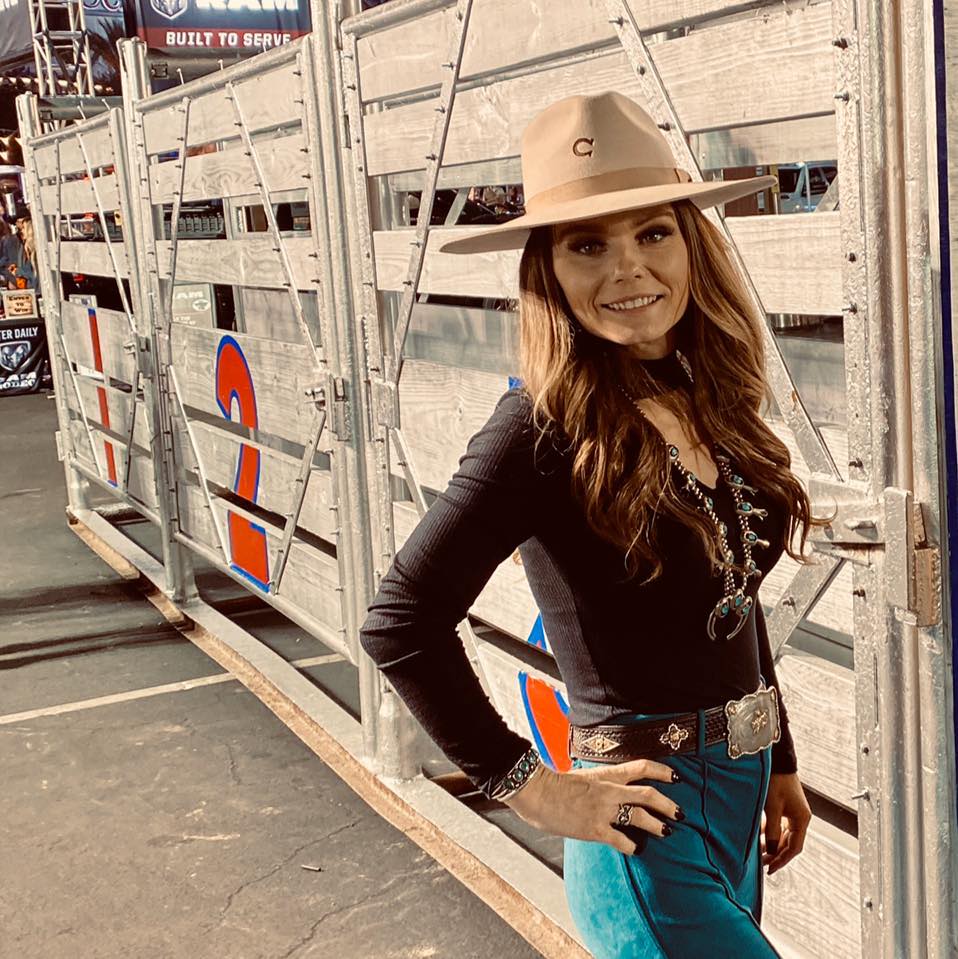While the word “latte” simply means “milk” in Italian, this beloved coffee drink delivers a lot more than just creamy sweetness. In fact, that velvety texture perfectly disguises the rich kick of caffeine derived from its heart of espresso. But, Does a Latte Have Caffeine?
Let’s dive in and explore the caffeinated secrets of this coffeehouse classic.
Importance of Knowing Caffeine Content in Latte
The latte’s widespread popularity, from bustling cafes in major cities to cozy local coffee shops, makes understanding its caffeine content important. While the milky smoothness of a latte offers a comforting and often indulgent experience, there might be a hidden caffeine kick that could benefit some while surprising others.
Factors like the number of espresso shots, the size of the drink, and even the origin of the coffee beans can influence the caffeine level in your latte. Some people might assume that the large amount of milk dilutes the caffeine significantly, but this isn’t entirely accurate.
It’s also important to consider specific groups of people who may need to be more mindful of their latte consumption. Individuals with sensitivities to caffeine, those with anxiety disorders, pregnant women, and people with certain medical conditions might want to monitor their intake or opt for decaffeinated versions to avoid potential adverse effects.
Does a Latte Have Caffeine?
Yes, lattes have caffeine. The foundation of any latte is a shot (or multiple shots) of espresso. A standard single shot of espresso contains approximately 63 mg of caffeine. Using a double shot, or ordering a larger-sized latte, will naturally increase the caffeine content significantly.
For example, Starbucks’ Signature Espresso Roast contains:
- Solo 0.75 fl oz – 75mg caffeine
- Doppio 1.5 fl oz – 150mg caffeine
- Triple 2.25 fl oz – 225mg caffeine
- Quad 3 fl oz – 300mg caffeine
Even when ordering a “decaf” latte, remember that decaffeinated coffee isn’t entirely devoid of caffeine. It still contains trace amounts, though significantly reduced compared to regular espresso.
Several factors influence caffeine levels in a latte:
- Bean Type: Coffee beans come in two major varieties – Robusta and Arabica. Robusta beans pack a higher caffeine punch than their Arabica counterparts.
- Roast Style: Interestingly, lighter roasts tend to hold slightly more caffeine than darker roasts due to longer roasting times breaking down some of the caffeine.
- Drink Size: Logically, a small latte with a single espresso shot contains less caffeine than a large latte with multiple shots.
Latte Variants and their Caffeine Content
There are many delicious variations of lattes, each with a distinct flavor and texture.
- Caramel Latte: A classic latte infused with rich caramel syrup or sauce, adding a sweet and indulgent flavor to the creamy espresso and steamed milk.
- Vanilla Latte: A smooth latte flavored with vanilla syrup or extract, imparting a subtly sweet and aromatic taste to the espresso and milk blend.
- Mocha Latte: An indulgent combination of espresso, steaming milk, and chocolate syrup or cocoa powder that results in a rich, chocolate-flavored latte with a trace of bitter coffee.
- Hazelnut Latte: A nutty and aromatic latte enhanced with hazelnut syrup or flavoring, offering a warm and comforting flavor reminiscent of toasted hazelnuts.
- Pumpkin Spice Latte: A seasonal favorite featuring espresso, steamed milk, and pumpkin spice syrup or seasoning, evoking the cozy flavors of autumn with notes of cinnamon, nutmeg, and clove.
- Matcha Latte: Made with finely powdered green tea powder (matcha), steamed milk, and a small amount of sweetener, this colorful and antioxidant-rich latte has an earthy flavor profile and a creamy mouthfeel.
- Turmeric Latte (Golden Latte): A health-conscious latte crafted with turmeric, steamed milk, and optional sweeteners, known for its vibrant golden hue and anti-inflammatory properties.
- Coconut Latte: A tropical twist on the classic latte, featuring espresso and steamed milk infused with coconut flavoring or coconut milk, imparting a creamy and slightly sweet taste reminiscent of the tropics.
- Iced Latte: A refreshing variation of the traditional latte served over ice, offering a chilled and invigorating coffee experience ideal for warm weather or as a midday pick-me-up.
- Decaffeinated Latte: A caffeine-free version of the latte crafted with decaffeinated espresso shots, allowing individuals to enjoy the creamy texture and flavor of a latte without the stimulating effects of caffeine.
List of Ingredients in Latte
The ingredients in a traditional latte typically include:
- Espresso: a strong coffee made from ground coffee that is brewed by passing hot water through it. Espresso forms the base of a latte and provides its rich, bold flavor.
- Steamed Milk: Warm, frothy fresh milk, created with a steam wand. Steamed milk balances the intense flavor of the espresso in the latte by adding smoothness and texture.
- Milk Foam: A layer of frothed milk placed on top of the latte to create a smooth and velvety consistency.
- Sweetener (Optional): Some individuals may choose to add sweeteners such as sugar, syrup, or honey to their latte to adjust the flavor according to their taste preferences.
- Flavorings (Optional): Additional flavorings like vanilla, caramel, hazelnut, or chocolate may be added to lattes for a customized taste experience. These flavorings can be incorporated using flavored syrups or sauces.
- Whipped Cream (Optional): For an indulgent treat, whipped cream may be added on top of the latte, particularly in specialty variations like flavored or seasonal lattes.
Latte Nutritional Information

A 16 fl oz latte offers a mix of nutrients and contains a considerable amount of caffeine. It provides 189 calories, with 7.4 grams of total fat, including 4.7 grams of saturated fat. You’ll also find 29mg of cholesterol, 181mg of sodium, and 19 grams of carbohydrates (all from sugar) in each serving.
Regarding key nutrients, a latte delivers 12 grams of protein, 4.4 mcg of Vitamin D (22% of your daily value), 441 mg of calcium (34% of your daily value), a small amount of iron, and a decent serving of potassium at 581.1 mg (12% of your daily value).
Importantly, remember that a 16 fl oz latte also packs 125.6 mg of caffeine, so factor this into your overall daily caffeine intake.
| Nutrition Facts | Amount per Serving |
| Serving Size | 16 fl oz (426 grams) |
| Calories | 189 |
| Total Fat | 7.4 grams (9% Daily Value) |
| Saturated Fat | 4.7 grams (24% Daily Value) |
| Trans Fat | 0.3 grams |
| Polyunsaturated Fat | 0.3 grams |
| Monounsaturated Fat | 2.1 grams |
| Cholesterol | 29 mg (10% Daily Value) |
| Sodium | 181 mg (8% Daily Value) |
| Total Carbohydrates | 19 grams (7% Daily Value) |
| Dietary Fiber | 0 grams (0% Daily Value) |
| Sugars | 19 grams |
| Protein | 12 grams |
| Vitamin D | 4.4 mcg (22% Daily Value) |
| Calcium | 441 mg (34% Daily Value) |
| Iron | 0.2 mg (1% Daily Value) |
| Potassium | 581.1 mg (12% Daily Value) |
| Caffeine | 125.6 mg |
Alternatives to Latte and their Caffeine Content
While lattes reign supreme in many coffee shops, there’s a world of delicious alternatives for those seeking different flavor profiles or a change in their caffeine routine.
Chai Tea Latte:
Chai Tea Latte aromatic drink features black tea infused with warming spices like ginger, cinnamon, cloves, and cardamom. It’s blended with steamed milk, offering a comforting sweetness with a modest caffeine boost. (Caffeine: approx. 40-70mg per cup)
Matcha Latte:
Made with finely powdered matcha green tea, this vibrant green latte boasts a unique earthy-sweet flavor. Matcha contains a type of caffeine called L-theanine, producing a calmer, more focused energy compared to espresso. (Caffeine: approx. 70mg per cup)
Golden Milk:
Turmeric is the star of this anti-inflammatory drink. Combined with spices like ginger, cinnamon, and a pinch of black pepper, it’s mixed with warm milk for a soothing and naturally caffeine-free beverage.
Herbal Tea Latte:
Chamomile, lavender, or peppermint blended with steamed milk create a relaxing and caffeine-free treat. It’s perfect for unwinding before bed or enjoying a moment of pure comfort.
Rooibos Latte:
Naturally caffeine-free, rooibos tea offers a slightly sweet and nutty flavor profile. Blended with steamed milk, it’s a wonderful choice for those with caffeine sensitivities.
Beetroot Latte:
Naturally sweet and earthy, beetroot powder blended with warm milk creates a visually stunning pink-hued drink packed with nutrients and antioxidants. It’s entirely caffeine-free for guilt-free sipping.
Dandy-Latte (Dandy Blend):
A popular coffee substitute made from roasted dandelion roots, chicory, and other natural ingredients. Dandy Blend offers a rich, slightly bitter flavor reminiscent of coffee, all without the caffeine jolt.
Hot Cacao:
Unsweetened cacao powder mixed with hot milk provides a rich, chocolaty treat packed with antioxidants. Opt for raw cacao for a more intense flavor and lower sugar content compared to hot chocolate mixes.
Chicory Coffee:
Made from the roasted root of the chicory plant, this beverage boasts a flavor surprisingly similar to coffee. It’s naturally caffeine-free and a great choice for those looking to transition away from their usual coffee habit.
Homemade Nut Milk Latte:
Blend soaked nuts (almond, cashew, etc.) with water and strain for homemade nut milk. Steam it and enjoy on its own or add spices like cinnamon or a touch of maple syrup for added flavor. It’s a versatile and naturally caffeine-free base.
| Alternative | Caffeine Content |
| Chai Tea Latte | Approx. 40-70mg |
| Matcha Latte | Approx. 70mg |
| Golden Milk | Caffeine-free |
| Herbal Tea Latte | Caffeine-free |
| Rooibos Latte | Caffeine-free |
| Beetroot Latte | Caffeine-free |
| Dandy-Latte (Dandy Blend) | Caffeine-free |
| Hot Cacao | Caffeine-free |
| Chicory Coffee | Caffeine-free |
| Homemade Nut Milk Latte | Caffeine-free |
Recommended Daily Intake of Latte

A 16 fl oz latte, typically made with a double shot of espresso, contains roughly 125.6 mg of caffeine. To put this into context, the recommended daily intake (RDI) of caffeine for healthy adults is generally around 400 mg.
This means that a single large latte provides a substantial portion, approximately 30%, of your daily caffeine allowance. It’s important to factor this into your overall consumption, especially if you enjoy other caffeinated beverages or foods throughout the day.
Being mindful of your caffeine intake will help you avoid exceeding recommended limits, which could potentially lead to side effects like jitters, anxiety, or sleep disturbances.
Conclusion
Does a Latte Have Caffeine? Lattes most definitely contain caffeine. While the milky smoothness may downplay it, the heart of the latte – the espresso shot – delivers a significant caffeine kick. Remember that factors like the number of espresso shots, bean origin, and size of your drink can significantly impact the final caffeine content.
If you’re managing your caffeine intake, or sensitive to its effects, be mindful when ordering your latte and consider the delicious lower-caffeine or caffeine-free alternatives that coffeehouses often offer.
Frequently Asked Questions
Q1. Is a latte a strong coffee?
Whether a latte is considered “strong” depends on your perspective. The milk in a latte significantly mellows the espresso’s intensity, making it smoother and less concentrated than a straight shot of espresso. However, a latte still delivers a noticeable caffeine kick, so caffeine-sensitive individuals might find it strong.
Q2. Are lattes healthier than coffee?
Lattes and black coffee have different nutritional profiles. Lattes contain more calories, fat, and sugar due to the milk. Plain black coffee is naturally calorie-free and offers antioxidants. However, if you’re looking for a source of protein and calcium, a latte would be the better choice. Ultimately, which is “healthier” depends on your individual dietary needs and how you customize your drink.
Q3. Is a latte sweet or bitter?
A classic latte leans slightly sweet due to the natural sugars in milk. The espresso provides a hint of bitterness, creating a balanced flavor. However, flavored lattes with added syrups will be significantly sweeter. The sweetness level is highly customizable, so you can ask for less syrup or sugar for a less sweet experience.
Q4. Is a latte stronger than a cappuccino?
A cappuccino generally has a stronger coffee flavor than a latte since a cappuccino has a smaller ratio of steamed milk to espresso. A latte’s larger volume of milk mellows the intensity of the espresso. However, both have the same caffeine content if made with the same number of espresso shots.
Q5. Does a latte have protein?
Yes, a latte contains protein due to the milk content. The amount of protein will vary depending on the size of your latte and the type of milk used (whole milk will have more protein than skim milk). However, it’s important to note that a latte should not be considered a major source of protein in your diet.
Q6. Is a latte a strong coffee?
Whether a latte is considered “strong” depends on your perspective. The milk in a latte significantly mellows the espresso’s intensity, making it smoother and less concentrated than a straight shot of espresso. However, a latte still delivers a noticeable caffeine kick, so caffeine-sensitive individuals might find it strong.
Q7. Are lattes healthier than coffee?
Lattes and black coffee have different nutritional profiles. Lattes contain more calories, fat, and sugar due to the milk. Plain black coffee is naturally calorie-free and offers antioxidants. However, if you’re looking for a source of protein and calcium, a latte would be the better choice. Ultimately, which is “healthier” depends on your individual dietary needs and how you customize your drink.
Q8. Is a latte sweet or bitter?
A classic latte leans slightly sweet due to the natural sugars in milk. The espresso provides a hint of bitterness, creating a balanced flavor. However, flavored lattes with added syrups will be significantly sweeter. The sweetness level is highly customizable, so you can ask for less syrup or sugar for a less sweet experience.
Q9. Is a latte stronger than a cappuccino?
A cappuccino generally has a stronger coffee flavor than a latte since a cappuccino has a smaller ratio of steamed milk to espresso. A latte’s larger volume of milk mellows the intensity of the espresso. However, both have the same caffeine content if made with the same number of espresso shots.
Q10. Does a latte have protein?
Yes, a latte contains protein due to the milk content. The amount of protein will vary depending on the size of your latte and the type of milk used (whole milk will have more protein than skim milk). However, it’s important to note that a latte should not be considered a major source of protein in your diet.

Rossi Glover, the passionate Owner of Grand Lake Coffee, infuses every cup with her love for coffee and dedication to quality. With an extensive background in the art and science of coffee, Rossi is not just a connoisseur but a storyteller, sharing the intricate tales behind each brew.

